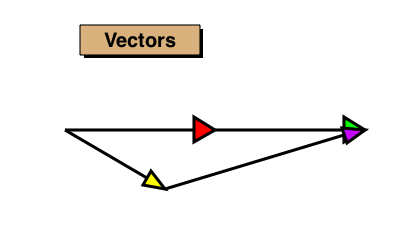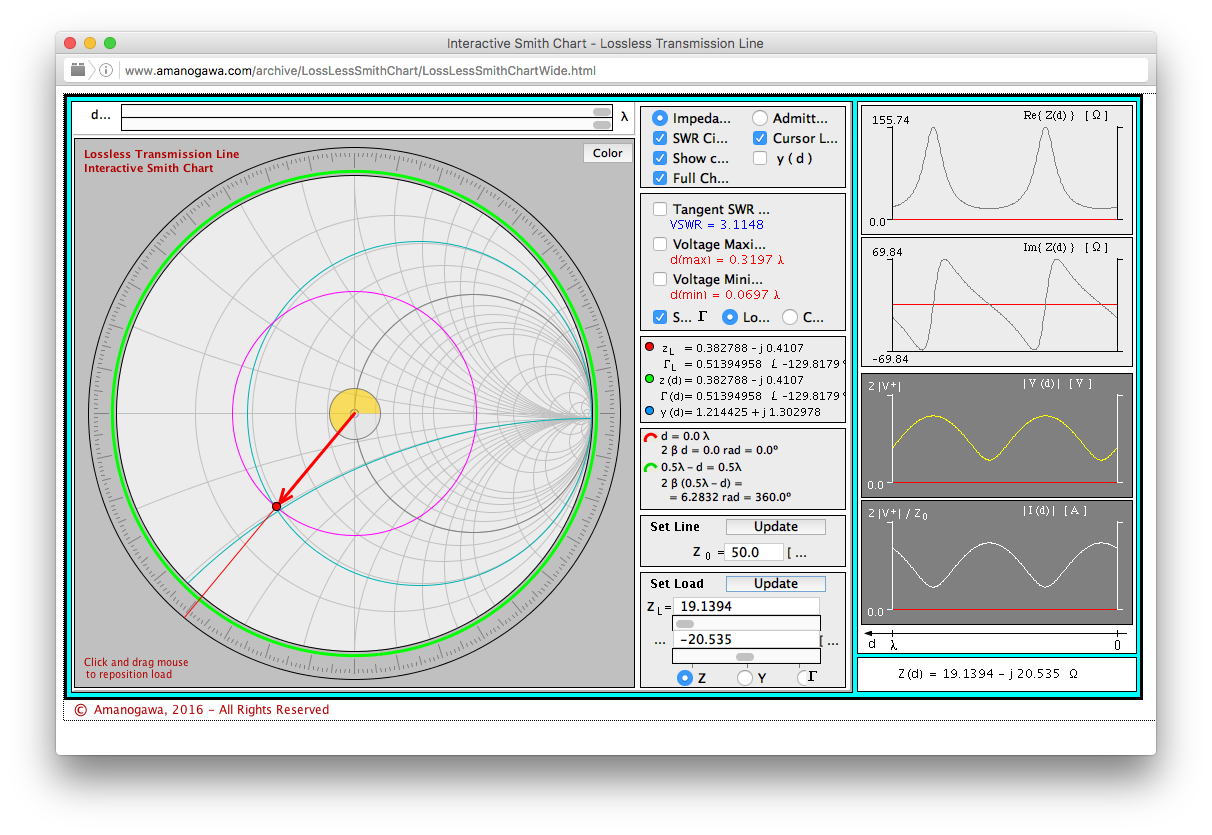If we evaluate numerically using the parameters p0 and p2 we have just obtained, we have:
vector(red) = 1.0*cexp(i*0.0) = (1.0, 0.0) vector(green) = vector(red) = (1.0, 0.0) vector(yellow) = 0.778415*vector(red)*cexp(i*-0.531850) = (0.670893, -0.394757) vector(purple) = 2*vector(red)-vector(yellow) = (1.32911, 0.394757)
Now, we are ready to calculate the impedance of the DUT.
Z(DUT) = 50 ohm * vector(yellow) / vector(purple) <-- because the current is the same.
= 50 ohm * (0.670893, -0.394757) / (1.32911, 0.394757)
= 50 ohm * (0.382787,-0.4107)
= (19.1394,-20.535) ohm
Here is a short program to compute VSWR.
#include <complex>
#include <iostream>
using namespace std;
int main() {
complex<double> x(0.670893, -0.394757);
complex<double> y(1.32911 , 0.394757);
complex<double> rho;
double vswr;
cout << x << y << x/y << 50.0*x/y << endl;
rho = (x/y-1.0)/(x/y+1.0);
vswr = (1.0+abs(rho))/(1.0-abs(rho));
cout << rho << vswr << endl;
return 0;
}
The output of the program is:
% ./a.out (0.670893,-0.394757)(1.32911,0.394757)(0.382787,-0.4107)(19.1394,-20.535) (-0.329108,-0.394756)3.1148
You can also use the Smith chart to get VSWR from Z(DUT).


